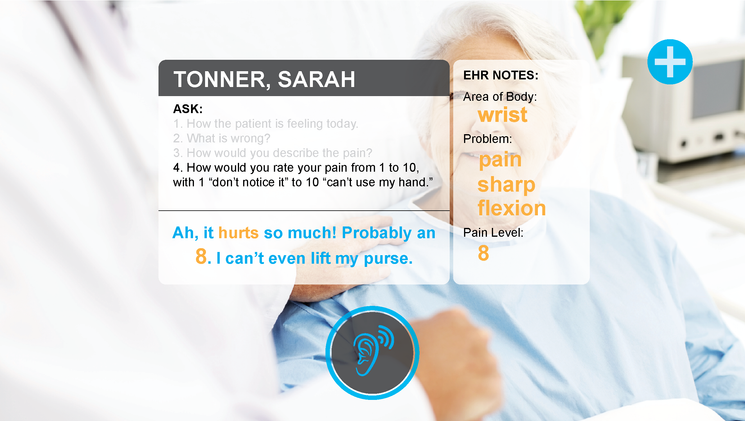
Lenovo
Commercial AR: Where Do We Even Start?
2017 | Design Lead
Early on, when Lenovo was starting to develop solutions using AR technology, they needed UX support to help them identify use cases across various verticals.
I led the initial scope that provided several ideas and use cases for them to explore. One of my ideas turned into a $300K research project that included healthcare professionals across three hospitals.
Business Objective
Establish use cases that utilize AR technology across Lenovo's verticals (Healthcare, Education, IoT) and execute a research study..
Design Objective
Provide various use cases, UX recommendations, rough mockups and concepts, and present them to the executive leadership team.
WHERE DO I START?
Our Research and Technology team has been exploring solutions in the AR and VR space for several years. While there are a lot of opportunities in this space, the team struggled to hone in on what was an easy Gen1 solution that also maximized the value-add for our customers.
This team of engineers needed design support.
...
And I jumped in.

IDEATION + WIREFRAMES
I started with a few simple wireframes based on some preliminary research we had already done with other AR platforms. The wireframes were quickly put together to establish the baseline: what did we want to cover?
In addition to the basic AR experiential challenges, two important design attributes come to mind when viewing content on an AR device:
1. Selectable objects need to be large and spaced appropriately
2. Hover states need to be clear and intuitive
Navigating a UI in open space is extremely challenging, therefore, any help and guidance from your software to aid users in executing tasks is critical to the overall user experience.
MOCK UPS + VISUALS
I was then asked to put together a few use cases to illustrate how we could utilize commercial AR technology within the healthcare industry. With a background in Healthcare, the team relied on my experience to help guide them in the right direction.
I started with a Home Menu and some simple tasks based on my simple wireframing exercise. Once you have a good understanding of the content, producing mockups is relatively easy and quick to do.
ADDITIONAL USE CASES
From the initial mockups, the team was ready to propose a preliminary user study where we would have a third party firm conduct customer research on areas of AR opportunities within healthcare. The development team asked me to produce a couple more tangible and realistic use cases.
Since my background is in othopaedics, I decided to use it in my use case proposals.
I started with a simple hospital room visit: the interaction between the nurse or doctor and the patient. In this example, I focused on basic AR components as well as pushed the team to explore more difficult technologies such as AI integration, language translations, and facial recognition. As designers, we must push our teams to force different ways of thinking, improve our innovative mindsets, and set realistic expectations and goals.
ADDITIONAL USE CASES
In this second example, I illustrate the value that commercial AR can bring to the surgical process. In my experience with orthopaedics, sales representations are present in each case because the procedures are highly complex and require multiple steps. By displaying these steps onto a head mounted device, the physician or healthcare professional can ensure they are replicating the steps properly. This would not only reduce the risk of missing a critical step, but could improve the overall operation and results.
Additionally, I also added a few next generation ideas in this example including the ability to have a second opinion: using the camera and mic, video chat with another healthcare professional, the ability to bring up cloud-based files such as previous photos or videos of the patient, and finally, the ability to analyze the wound and suggest treatment options utilizing an AI technology.
NEXT STEPS
After I delivered and pitched these initial mockups and workflows, Lenovo has built an entire Commercial AR team from scratch, investing millions of dollars into the creation of this new emerging technology.
Immediately following my deliverables, the team invested in a $300K research study and found numerous opportunities to expand our value proposition.
Today, Lenovo is hard at work to realize this technology with a team of more than 50 innovators, engineers, and designers. There is a hardware component as well as multiple software platforms: head-mounted display, content creator platform, and a cloud-based IT administrative console for managing and deploying the solution.
I am responsible for overseeing the overall design of the product experience, both hardware and software.
























































